California Corbina Fishing: Best Rigs, Rods, Bait and Tackle
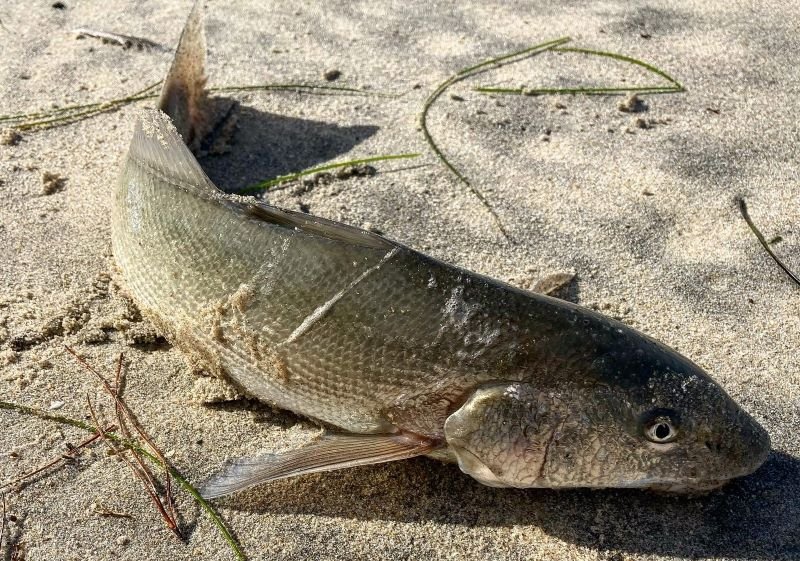
Corbina is one of the most popular species of surf fish targeted by surf anglers across So Cal. Typically caught by a method called surf fishing, anglers prefer to use an 8’6″ rod like the Okuma SST paired with a 3000 or 4000 size reel spooled with 15lb mono fishing line. The best bait for corbina fishing is unarguably sand crabs and the best rig for corbina is the Carolina rig.
The California corbina belongs to the croaker family and is one of the most abundant coastal species of fish in California. Spending much of their time hunting in extremely shallow water, they can be seen cruising around with their dorsal fins breaking the water’s surface. In this overview, we’ll talk about corbina fishing, some key identifying characteristics of the fish, its range, habitat, and preferred prey or bait and much more. And of course, we’ll tell you exactly what you should use for gear and tackle and break down the best rod for corbina fishing and the best reel for corbina fishing.
| Common Names | Corbina, California Corbina, Whiting, King Fish, Bean, Corb |
| Legal Limit (#) | 10 Bag Limit |
| Legal Size (in) | N/A |
| Record Size (in/lb) | 28-inches/8.5-pounds |
| Typical Size Range (in) | 10 to 22-inches |
| Fighting Strength (-/10) | 8/10 |
| Range | Gulf of California, Mexico – Point Conception, California |
| Habitat | shallow/sandy |
| Bait | sand crabs, mussel meat, clam meat, blood worms |
Identification of the California Corbina
With a grey-colored body and a white underside, to the untrained eye, the corbina could be confused with it’s relative (the yellowfin croaker). Its head is longer and more triangular in shape though and it lacks yellow coloration. Corbina mature at a length of 11 to 13-inches at about 2 to 3-years old.
Scientific Name: Menticirrhus undulatus
Corbina vs. corvina… a corvina is a different fish than a corbina. The corvina is more commonly caught in bays, but occasionally caught in the surf. Coincidentally, they are both part of the croaker family, but the corvina is more closely related to the white seabass.
Range
Corbina naturally occur from Point Conception, California to the Gulf of California. Although, Southern California is where the they are most abundant in numbers.
Habitat
These fish enjoy flat, sandy areas where sand crabs are plentiful. In the summertime, most sandy beaches hold corbina in good numbers. Come winter, many retreat out deeper and into bays and estuaries where the water is calmer and warmer.
California Corbina Size
The California corbina grows to around 23-inches on average although anglers will report one or two catches per year in the 24-to-26-inch range. The biggest fish to date was 28-inches long and that stands as the record for now. Since the first 28-incher, there have been 3 or 4 more anglers to record catches at that mark.
On a typical day of fishing for corbina, you can expect to catch them in the 10-to-18-inch range. Once they cross the 16-inch mark they start to fight very well.
Surf Fishing for Corbina
Along the beaches of California, corbina will scour ultra-shallow waters looking for sand crabs and clams. These fish will roam the shallows more frequently than their fish counter-parts in the yellowfin croaker. They are known for their elusiveness as they have a tendency for inconsistent bite patterns. Sometimes, they timidly pick away at your bait without fully inhaling your hook, other times they show no hesitation as they slam your hook surely taking you for a ride!
These fish are not an easy catch. Don’t get me wrong, if you learn the right techniques and follow these surf fishing tips, you’ll have those 20 plus fish days. But, for a beginner, corbina fishing can easily frustrate an angler, especially if you attempt sight-casting.
Gear and Tackle for Corbina Fishing
- Rod: Okuma Celilo (8’6″ MA) or the Okuma SST (8’6″ MA)
- Reel: Penn Battle II or III 4000 series
- Mainline: 15-pound monofilament
- For Bait: Carolina Rig:
- Leader Line: 15-pound fluorocarbon
- Swivels: 15-19mm barrel swivels
- Hooks: size #2 or #4 owner mosquito hooks
- Weights: 1-oz egg weight
- Beads: 8mm fishing beads
- For Lures: Lucky Craft FM 110 and Shimano WM 115 SP
- Other best surf fishing rods and best surf fishing reels
Best Surf Fishing Rod for Corbina Fishing
The gear and tackle listed below is a standard set up that will work perfectly for surf fishing for corbina. If you’re looking for a few additional options, I’ve written an entire article outlining the best rods for surf fishing and why. Take a look at the Okuma SST MA. It’s a couple steps up from the Okuma Celilo in terms of quality, and in my opinion, it’s the best all purpose rod for surf fishing and specifically, it’s the best rod for corbina fishing.
Best Surf Fishing Reel for Corbina Fishing
As far as the reel goes, the Penn Battle III 4000 series (linked and mentioned above) is a great reel. You can even get away with a 3000 series if you prefer a smaller reel. But, if you’re looking for something that will hold up against the elements and withstand dunks and drops in sand and saltwater, look no further than the Penn Spinfisher IV 3500 series reel. This right here is what I would consider the best surf fishing reel in the game for a very solid price. I break down why this reel is so good and list a few other options in my article about the best reels for surf fishing.
If you’re at all confused or questioning the gear that I use, here’s my page on why I use the gear that I use. This includes why I use 15-pound test instead of 6-8lb as you’ve likely read elsewhere.
Best Rigs for Surf Fishing for Corbina
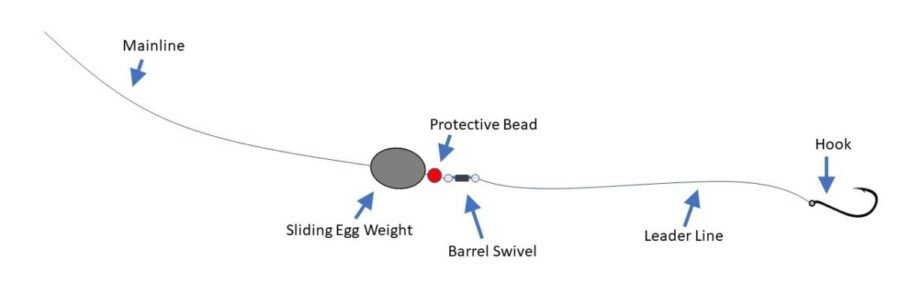
The most commonly used rig when surf fishing for corbina is the Carolina rig. It’s what I use and it’s what most anglers use. But, different conditions and different types of beaches can call for different rigs. Take a look at my article here on the best surf fishing rigs and when to use each.
Best Bait for Corbina Fishing
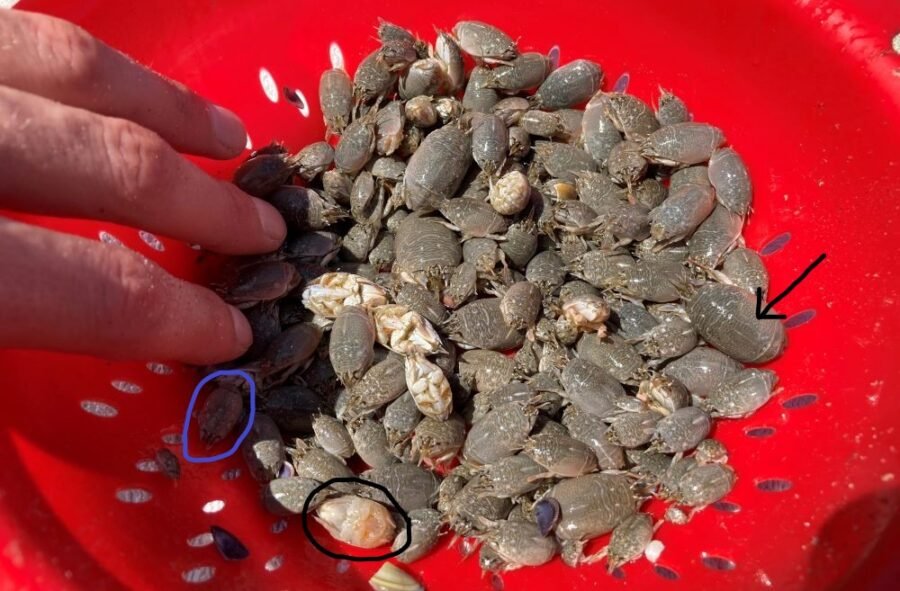
Sand crabs are the best bait for California Corbina fishing, but, sand crabs aren’t here year round. From November through March, I rely on the baits listed in this article on the best bait for surf fishing. These fish tend to swim the shallow waters here in Southern California and you’ll often find fish in troughs and scallops in just inches of water! They swim through these troughs waiting for sand crabs to be unearthed when the current sweeps through. For techniques and information on how to catch the California Corbina and other common species of Southern California surf fish, I promise the tips on our home page will help you increase your hook up rate.
Selecting soft-shelled crabs will also increase you’re hook-up rate. Fish tend to prefer these crabs over the hard-shell crabs. Also, don’t pick the biggest crab! The best size sand crabs are finger nail-size as these are the universal perfect size for all fish in the surf. After choosing the perfect size and texture of sand crab for your bait, it’s important to understand what time of year to head out for a surf fishing session. Corbina are most plentiful along the surf from the months of June through August as they move into deeper waters when the temperature drops. See the chart at the bottom of the page for details.
How to Find and Hook Sand Crabs Video
Sight-Casting for California Corbina
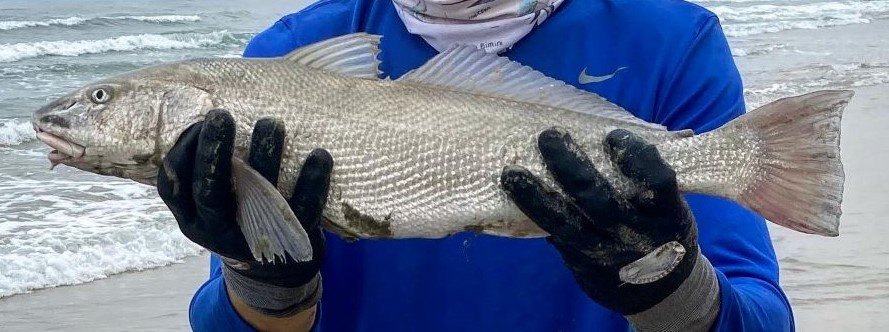
As mentioned above, these fish have inconsistent bite tendencies. They don’t usually gobble up your bait immediately. Hook-sets are key, and if you don’t pay close enough attention, you’ll likely lose more fish than you catch. That’s why corbina fishing can be frustrating at times. Stay focused and pay close attention to the feel of the bite.
The best method for setting the hook, is to wait until you feel multiple taps in a row and start to feel the weight of the fish pulling. It’s best to not set the hook upon the first feeling of a bite.
During the summertime, it truly doesn’t take long to spot California corbina cruising the surf . But, you must learn to spot them and cast in front of them without spooking the fish. Use polarized sunglasses as these will allow you to see into the water by minimizing reflections and glares. With this advantage, you can spot fish in the surf from further away, thus, not spooking them.
Once you’ve spotted your target, the easy part’s over. Next, you have to present your bait in a manner that will catch the corbina’s eye, without spooking it.
The Most Important Factor of Sight Fishing
There are a few general recommendations to follow when sight-casting for corbina (and spotfin croaker and other surf species). You want to cast in front of the fish. This doesn’t mean the fish has to see the bait enter the water, and in most cases, it’s best that they don’t. After you get a sense of the trajectory of the fish and predict where it will be, cast there. When possible, cast where and when a wave is about to break as it will mask the sound/vibration of your weight hitting the sand. If you can get all that down, you’ll have a good amount of success in the surf.
The most important factor of sight fishing is to spot your target from as far away as possible. Over the years, I’ve learned a great deal about this species. I began surf fishing with the underlying assumption (influenced by what I had read and heard) that corbina were extremely line shy. The more I fish, the more I question or even deny this theory… in general.
Corbina Are Not Line Shy, But a Lighter Weight Will Help
I’ve fly fished for trout and (obviously) sight casted for corbina and bigger spotfin croaker. I’ve come to believe that fish (in general) aren’t “line shy”. I think the theory holds some merit, but I think the wording is off. I’ll be dedicating an entire article to this theory of mine in the coming weeks for an in depth analysis.
My bottom line: I believe that anglers have come to the conclusion that corbina are “line shy” because they don’t do a good job of hiding themselves and presenting bait.
This brings me back to my “most important factor of sight casting”- to spot your target from a far and to cast from a far with a solid lead. You WILL see great improvements in your success rate if you focus on this factor. Fish won’t bite if they see you or know that you’re there. They will however, if they don’t see you… even if you’re using 20-pound fluorocarbon as your leader. I won’t explain in this article, but here’s why I use fluorocarbon vs monofilament?
Along with staying out of their line of sight, corbina have what’s called a barbel. This sense vibrations in the sand and helps them hunt sand crabs. It also senses the movement of your feet and the weight hitting the sand, So, lighter steps and lighter weight will help you here.
California Corbina Diet
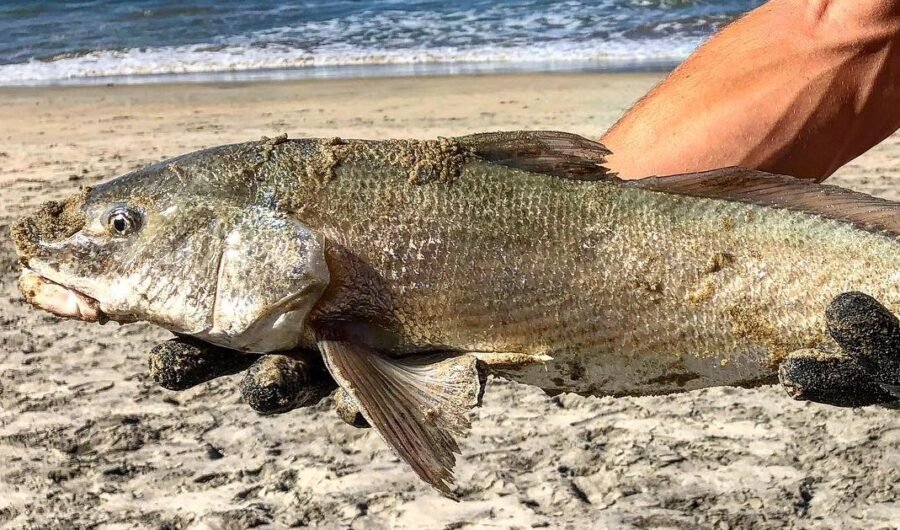
California Corbina are known to consume small crustaceans and mollusks including sand crabs, muscles and clams. Additionally, they’ll go after smaller bait fish. I’ve tested many different baits for the purpose of fishing for corbina and the most productive baits are sand crabs, clams and mussels.
Do Corbina Eat Lures?
Most often, no. Corbina don’t usually take on lures. But, it had been done before, and it will happen if you fish with lures often. When I say lures, I’m talking about the ones these proven best lures for surf fishing. Corbina will absolutely take artificial sand crabs and similar grubs etc. But, jerkbaits and swimbaits are typically going to attract halibut. You can even catch white seabass and even calico and other species with jerkbaits and swimbaits in So Cal’s surf fishing scene.
It’s imperative that you understand their tendencies. Sure you might get lucky and hook up here and there, but that’s not going to work all the time. Understand that corbina fishing in Southern California can be a very active style of fishing and it should be! You might take sight-casting for granted at first but you’ll begin to realize its value as time goes on.
Is Corbina Good Eating?
Corbina is a great tasting fish. In fact, they’re one of the cleanest white fish you’ll catch in the surf behind halibut. It’s a white, flakey meat that does well with lemon, butter and other herbs. Although, many other preparation styles bode well too. Beer-batter is one other popular way to prepare and cook corbina.
Some of the best methods to prepare corbina for eating purposes include beer battered, pan seared, baked, and grilled. For some of the best fish recipes, check out my recipes page.
Don’t forget to subscribe to the surf fishing report page below.
Subscribe to our newsletter!
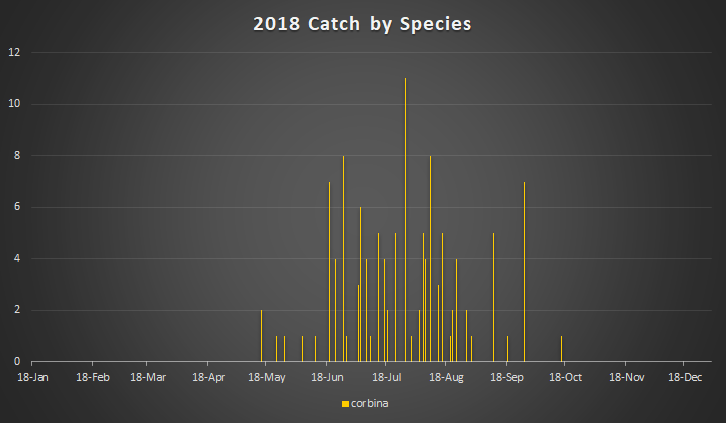
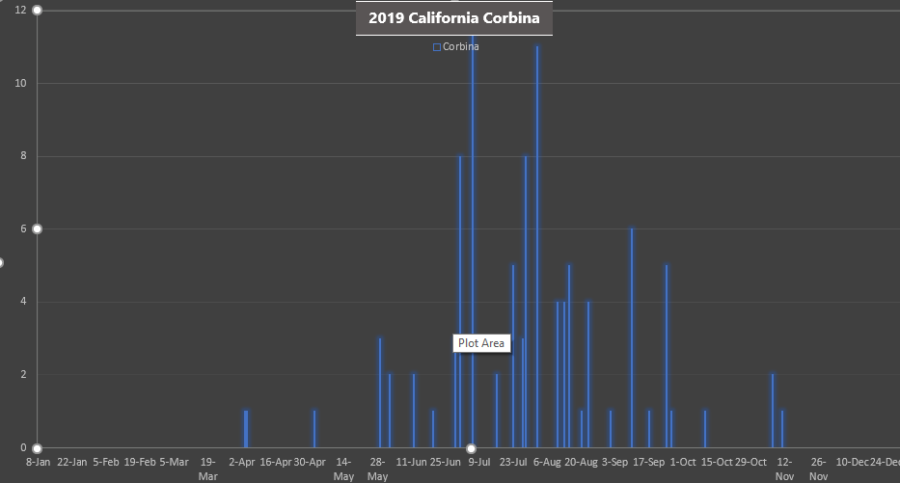

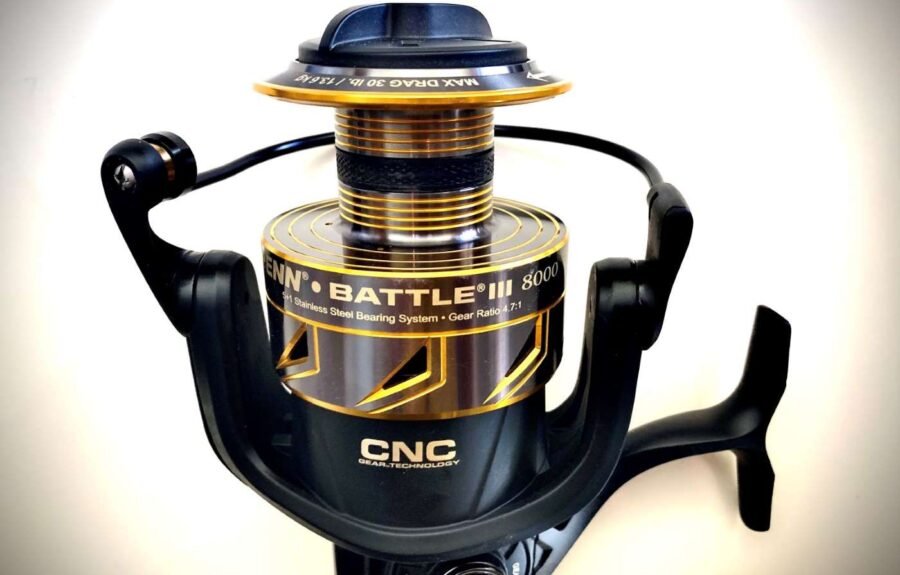
Great information and tip
Thanks!
Thanks for the article,
No problem!
Just started surf fishing and super glad I came across your blog. All great info! If you ever wanna take a newb out I’m game. I live in IB and plan to hit the strand soon.
It’s always a pleasure to hear when I can help somebody learn more about surf fishing. If you’re ever interested in a guided session, here’s my page: http://surffishingsocalsd.com/surf-fishing-service/
Regardless, keep following the page and explore the rest of the website as I try to fill it with valuable insights. Good luck out there Jorge!
That’s awesome you do local guides. When money isnt so tight I’ll def take you up on that. Any beach you think I should hit up to try sight fishing for corbina?
Any beach in San Diego I promise you can sight cast for Corbina. Although it’s always better to pick less crowded beaches for sight fishing. Mission, surprisingly has a lot of action in the shallows but check out my “beaches” page as it outlines every beach in San Diego.
And whenever you’re ready I’m ready👌 Tight lines out there!
Hey Nick, fantastic Post /article. My biggest corbina and spotfin happened blind fishing in between sight fishing sessions. You know what I’m talking about. When your sight fishing and fan casting in between sightings. Caught a 24-inch corbina right next to the southside of Scripps Pier. Fish picked up my sand crab about 10 feet away from me and when I swung I pulled its head right out of the water. Pulled a 10 lb, 26 in spotfin casting deep at Torrey Pines. #dragpullers.
Those are two very impressive fish man! Curious though… how long ago were you fishing the south side of La Jolla pier?
Good article. Was great Corbina fishing in Hermoas Beach this year inJuly. Has died off now. Hope big surf perch finally move in or it will be time to fish halibut.
Perch and halibut coming soon!
Just as I say Corbina have left the South Bay I get 2 this morning up around Manhattan Beach on gulp.
Awesome! Definitely dwindling for the year but they’re still here.
Thank you so much for this information. I am a newly single female with beginner fishing skills, the ex was an avid fisherman and introduced me to surf fishing which my my favorite type of fishing by far. I’ve caught Corbinas before but haven’t had much luck recently usually at Coronado beach but it’s always full off people and dogs and sand crabs are hard to come by. I’m self learning now that he’s not around and your page has been so helpful to me. Thank you for doing what you do.
No problem! I’m glad you’ve found the info helpful.
Just fished Hermosa. Saw alot of large corbina. Managed one 15″ and 4 small 10-12″. Only found one crab to use. Not sure why i cranked my drag completely off. A big one broke my line at the bail…took only sand crab i found in 5 days. Musta been thinking musky back home!
Always fun seeing them cruise the shallows
I fished Hermosa today and I could see Corbina in the skinny water at low tide searching for crabs. Couldn’t get a bite on gulp camo. Nice to see fish there. Walleye perch here. Waiting on big surf perch to come in. Merry Christmas stay safe !!
Try mussel meat or fishbites! That’s super cool to see in the shallows.
I fished Corbina for over 40 years and the biggest one I caught was 6 lbs. and 1/4 ozs. Unfortunately I did not record the Corbina. The bait I used was bay Muscle.
Appreciate the story. I don’t doubt that many anglers have landed record fish and just didn’t care to report them or simply didn’t know. Another aspect of the sport that makes it so awesome!
I forgot to mention the length 30 inches. And the Corbina was caught in Manhattan beach.
That’s a tank!! Nice job!
Best bait I found is the sand worms that you can find eating the grunion fish eggs near the shore a few days after the grunion run. If you put 3 of those orange colored worms on a small hook and a 4 or 6 lb. line and cast it in front of where they’re going you can catch them. When I used to go surf fishing, I could catch between 6 to 12 in one day up to 22” long. The trick to catch worms is you go to the beach a day or 2 after the grunion run and bring a small shovel and bucket and look for grunion fish’s eggs and you will find a few worms eating the eggs. The eggs are usually found near where the edge of the highest tide reached, grunion lay their eggs during high tides and they lay eggs where the water reaches the farthest. I fished from Redondo to Dockweiler beach
Thanks for the input, Anthony.